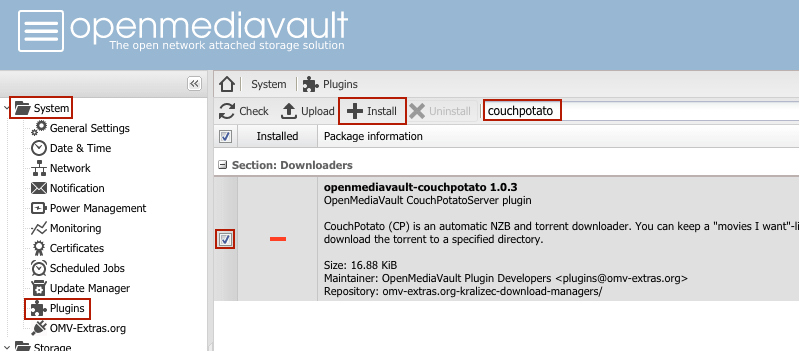

- #Install sonarr on headless openmediavault how to
- #Install sonarr on headless openmediavault install
- #Install sonarr on headless openmediavault full
This may take you to a menu to install tvheadend client.ħ) Set up Tvheadend server as Ronnie's great video shows. Next, go to the General settings and select Enable. Next, go to the EPG settings and turn on "Do not store the EPG in the Database". Select the Enable button.Ħ) Go to the System / Live Tv and turn on Settings level to Advanced. Next, we need to toggle the Disable/Enable button. Then select the Ok button to exit the configuration. Select the Configure button and select "FILE" for XMLTV configuration and for XMLTV File Location, browse by selecting Root System and select the "xmltv.xml" file under the /storage/mc2xml directory. mc2xml -a -c us -g 12345 -T UserName:Passwordģ) If you created the xmltv.xml file on another computer, transfer this file over to your Openelec system and place it in the /storage/mc2xml directory, then change it's permissions:Ĥ) Openelec no longer includes Tvheadend server in their release, however it can be added by an unofficial repository by following the instructions here: ĥ) Once you get it installed, on the tveheadend server addon (if you happen to go back to the main menu, you can go to it again by System / Addons / Enabled Addons / Services). The following uses Schedules Direct, to initialize and create the xmltv.dat file (contains the zip code and username password, etc, so you only have to initialize it once). If you go into the tvheadend web interface, in the Electronic Program Guide, you can double-click on the show with an "*" to record the new episodes only. Tvheadend doesn't know anything between repeats or new shows, so it's recommended that the -a option is used so it marks any show that is new with an "*" at the end of the show name. One work around is to install mc2xml on a PC and have your Openelec system grab the xmltv.xml file from the PC on a nightly basis (via cron or manually copy it over). However, that will only work for intel/AMD PC processors. I use Schedules Direct for guide data.ġ) Create a folder under /storage that will contain the xmltv.xml file, for example:Ģ) Unfortunately, Openelec doesn't include the Perl script language, so the grab_tv_na_dd script won't work, so you need another program, like mc2xml. With only one Android TV box and an external OTA (antenna) tuner (SiliconDust HDHR3), I have a stand alone DVR. I am running OpenELEC on an Android TV box (MK808B plus) with tvheadend server installed.
#Install sonarr on headless openmediavault how to
nano apps.This video is showing how to configure tvheadend server to enable Kodi to use it as a PVR. conf-file or edit the existing file using your favourite shell text-editor, e.g.

#Install sonarr on headless openmediavault full
For the sake of full disclosure, I will assume you didn’t. If you’ve followed the steps on the previous page, this part will be easy.

How to Set Up a Nginx Reverse Proxy for Sonarr and/or Radarr Sonarr will now prefix every request to both ports with the provided Base-URL so we can make it work with a Reverse Proxy.


 0 kommentar(er)
0 kommentar(er)
